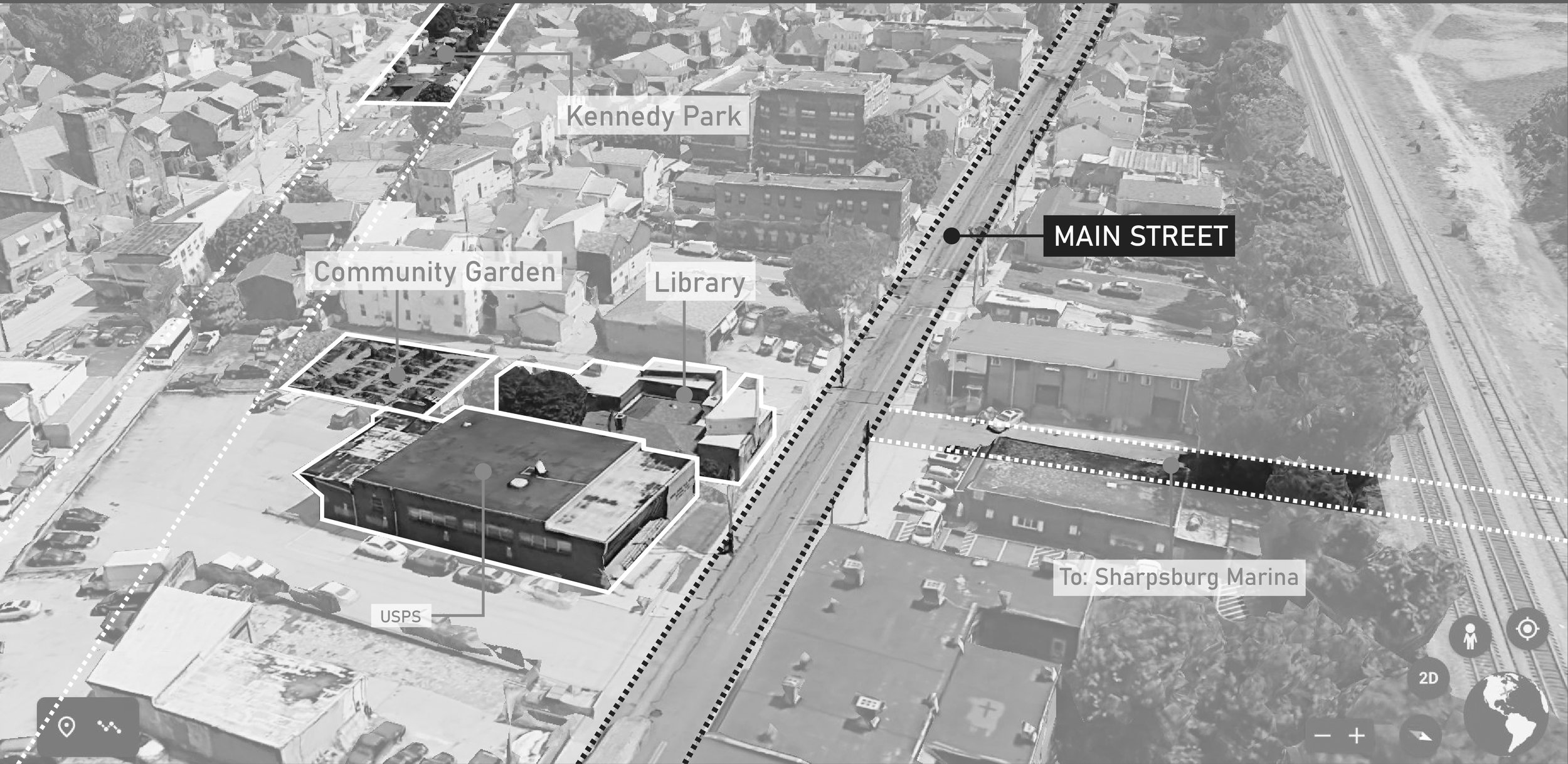the other side of the track
Urban Planning and Residential Programming through Identity, Pride and Incremental Development in sharpsburg, pa
48-510 Advanced Synthesis Option Studio | Instructor: Christine Mondor
How to construct an identity through spatial practices and systems of production in a river town that is separated from its shoreline by railroad tracks and has little access or relationship to the river through exploring the problems of othering?
1. Physical division made by the railroad track between the riverfront and the rest of the neighborhood. A lot of attention has been paid to the riverfront by the recent developers for its potential for recreational and economical values. Future commercial and residential developments in the riverfront area may bring socio-economic and physical division between the two.
2. Lack of access to commercial area in the larger middle and eastern part of the neighbrood. Most of the commercial activities are concentrated on the western part. The houses in the western part is also newer and better maintained.
3. Sharpsburg teems with local festivals and cultures. These are gaining more attention as Pittsburgh is approaching the center of national spotlight, but still not as publicized as some of the more prominent events within the city. These local events and programs could be adapted by housing plans to engage the locals and the visitors and develop stronger identities among the residents.
As a proposal: I designed a plan to develop Main Street - a mix-used street lying directly north to the railroad track as a buffer zone as well as a connection between the riverfront and the rest of the neighborhood. There are lots of potential in this largely underdeveloped street but the length of the neighborhood requires multiple interventions. The process was as follows: pick different points along Main Street that display strong character and function. Study the existing condition, expand and build upon them. Add new desirable programs. Plant housing units along these newly-identified zones to attach the identity of each zone to the housing and its residents. These zones will work as urban noes, as resting spots, to expand public programs, revitalize Main Street and encourage incremental development throughout the neighborhood.
zone 1



zone 2



zone 3



zone 4





































